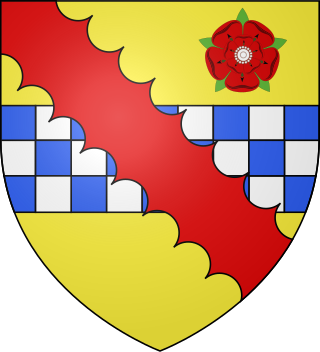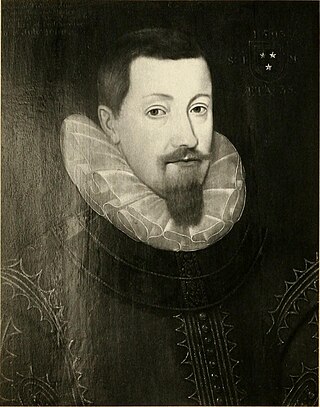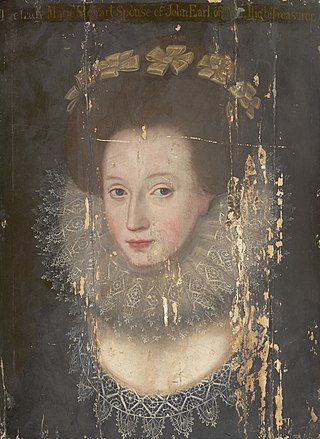
John Erskine, 2nd Earl of Mar was a Scottish politician, the only son of another John Erskine and Annabella Murray. He is regarded as both the 19th earl and the 2nd earl.

Walter Stewart, 1st Lord Blantyre (1555–1617) was a Scottish courtier and politician. He was Keeper of the Privy Seal of Scotland from 1582 to 1596 and Treasurer of Scotland from 1596 to 1599.
Sir Richard Cockburn of Clerkington, Lord Clerkintoun (1565–1627) was a senior government official in Scotland serving as Lord Privy Seal of Scotland during the reign of James VI.
Jean Fleming, Countess of Cassilis (1553/4–1609) was a Scottish noblewoman and courtier at the court of James VI of Scotland, and a survivor of domestic violence.

John Murray, 1st Earl of Tullibardine was a Scottish courtier and leader of the Clan Murray.

Marie Stewart, Countess of Mar (1576-1644) was a Scottish courtier. She was the daughter of Esmé Stewart, 1st Duke of Lennox and Catherine de Balsac d’Entragues (d. c.1631) and a favourite of James VI of Scotland. After her marriage, as was customary in Scotland, she did not change her name, and signed her letters as "Marie Stewart".
Annabell Murray, Countess of Mar (1536–1603), was a Scottish landowner, courtier and royal servant, the keeper of the infant James VI and his son Prince Henry at Stirling Castle.

Dr Martin Schöner or Schönerus, physician to James VI and I and Anne of Denmark.

Henrietta Stewart (1573–1642) was a Scottish courtier. She was the influential favourite of the queen of Scotland, Anne of Denmark.
William Murray of Tullibardine was a Scottish courtier and leader of the Clan Murray.
Margaret Livingstone, Countess of Orkney was a Scottish courtier and landowner. She was a daughter of William Livingstone, 6th Lord Livingston and Agnes Fleming.
Margaret Fleming, Countess of Atholl (1536-1586) was a Scottish courtier and landowner rumoured to be involved in the occult. She served as lady-in-waiting to Mary, Queen of Scots.

Magdalen Livingstone was a Scottish courtier. She was a favoured lady-in-waiting to Mary, Queen of Scots, and later belonged to the household of Prince Henry.

Queen Elizabeth I of England paid a subsidy to King James VI of Scotland from 1586 to 1602. This enabled her to influence James by delaying or deferring payments to his diplomats in London. Records survive of the yearly amounts, and details of the expenditure in some years. A large proportion of the money was spent on the royal wardrobe of James and Anne of Denmark. Some royal expenses were met by Anne of Denmark's dowry, which was known as the "tocher". The regular incomes of the Scottish crown were feudal rents, customs, and "compositions" charged on grants of land. Accounts for royal incomes and payments survive as the exchequer rolls and lord treasurer's accounts and have been published as historical sources.
Marie Ruthven, Countess of Atholl, was a Scottish aristocrat.
William Murray of Tullibardine (1510–1562) was a Scottish landowner.
Alexander Hay of Easter Kennet was a Scottish lawyer and politician.

John Stewart was a Scottish soldier and Constable of Stirling Castle for James VI of Scotland.
Violet Mar was a Scottish woman accused of witchcraft and plotting the death of Regent Morton, the ruler of Scotland.

William Murray was a Scottish courtier, a household servant of James VI of Scotland as a "valet of the king's chamber".










